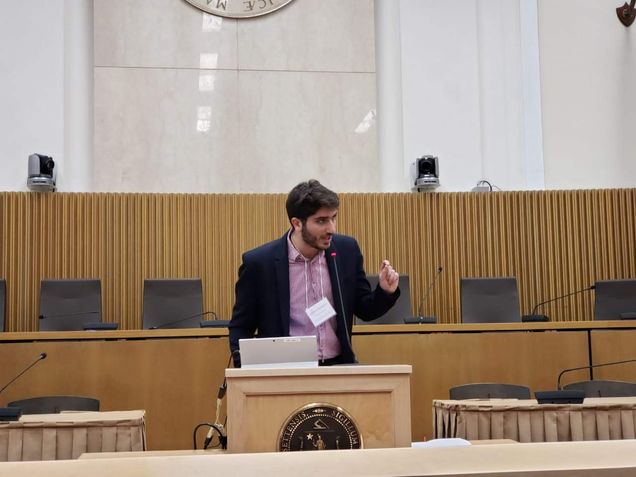Two presentations at the BARI conference 2019.
On April 26th, Rebecca Swaszek and Salomón Wollenstein presented their work at the Boston Area Research Initiative (BARI) Conference 2019. Both of their work focused on how to improve transportation systems in Megacities, and more specifically in the Boston Metropolitan Area. The BARI conference brings together academics, policy makers, and practitioners to highlight work being conducted throughout Greater Boston as a way to share insights and methods, catalyzing inter-disciplinary, intercity collaboration in the use of data and technology.
Rebbeca’s research is focused on Inventory Management (Bike replenishment) of Bike Sharing Systems. In other words, she solved the problem of load balancing of bike stations assuming finite-capacity. During her talk, she carefully explained how to use Receding Horizon Control to optimally route a fleet of bike replenishment trucks over a planning horizon.
And Rebecca Swaszek of @BU_Tweets Systems Engineering using #bostondata to assess the impact of more bike share stations in my @SomervilleCity neighborhood. pic.twitter.com/ZOwtIMAlHC
— Michael Jay Walsh (@michaeljaywalsh) April 26, 2019
The event-driven controller of this strategy decreases the complexity of finding optimal routes so that it may be used in real-time. Through simulation experiments, she found that a planning horizon of around 30 minutes is enough to be close to the full scheduling optimal solution.
In contrast, Salomón presented his work on Data Visualization and routing of Connected Autonomous Vehicles (with Arian Houshmand). He began his talk by motivating the audience with a website he developed showing the increase in traffic congestion in Eastern Massachusetts from 2012 to 2015 as well as the definition of traffic congestion. Then, he explained how to ease traffic by making system-centric routing decisions for commuters as opposed to selfish decisions (as we drive today). He argued that this might be accomplished using government incentives, changing travel time functions on Apps (Waze, Google Maps) or by implementing system-centric strategies on Autonomous vehicles.
Greenshield model for congestion pic.twitter.com/HsDPo3Enbf
— Ben B (@bpben2) April 26, 2019
